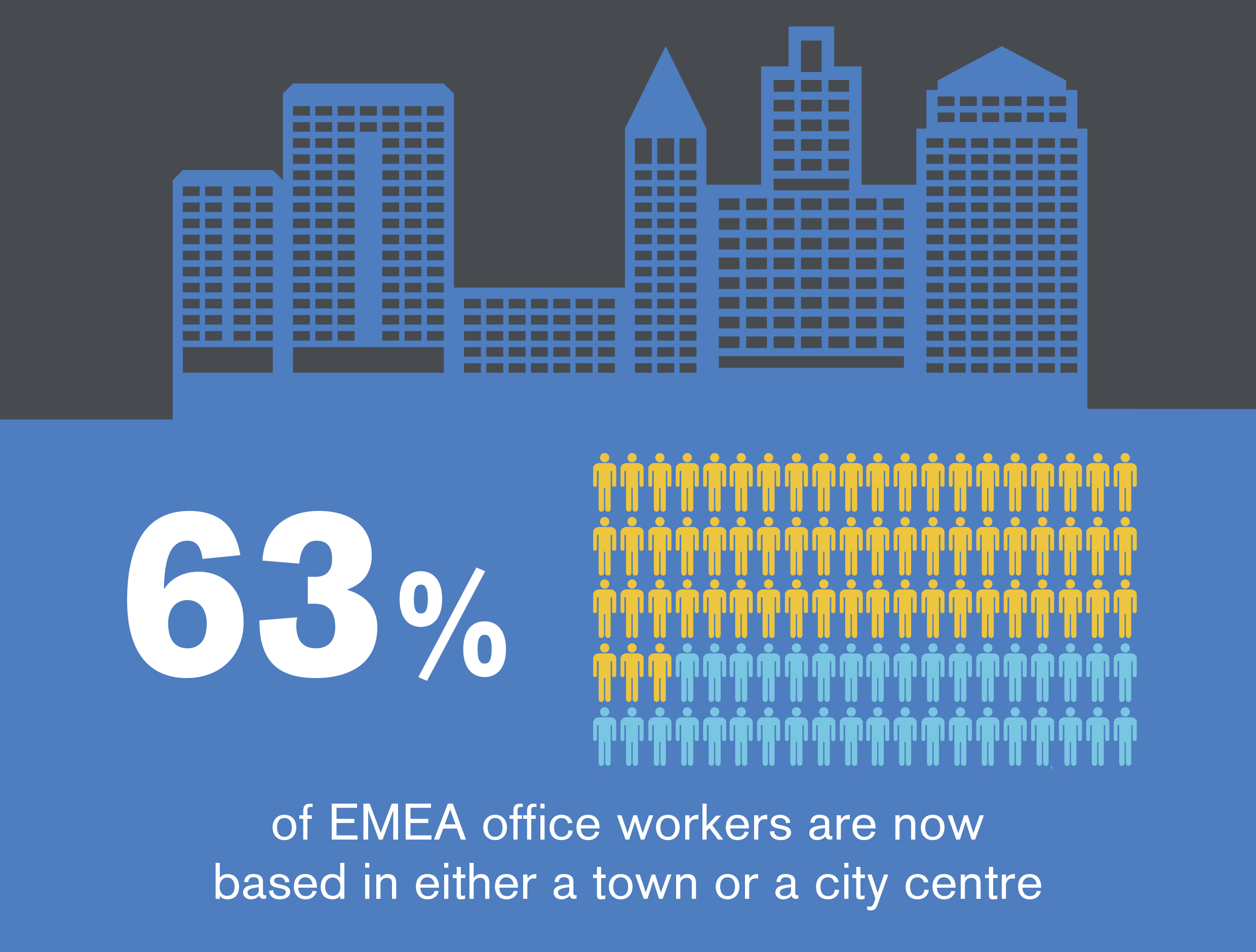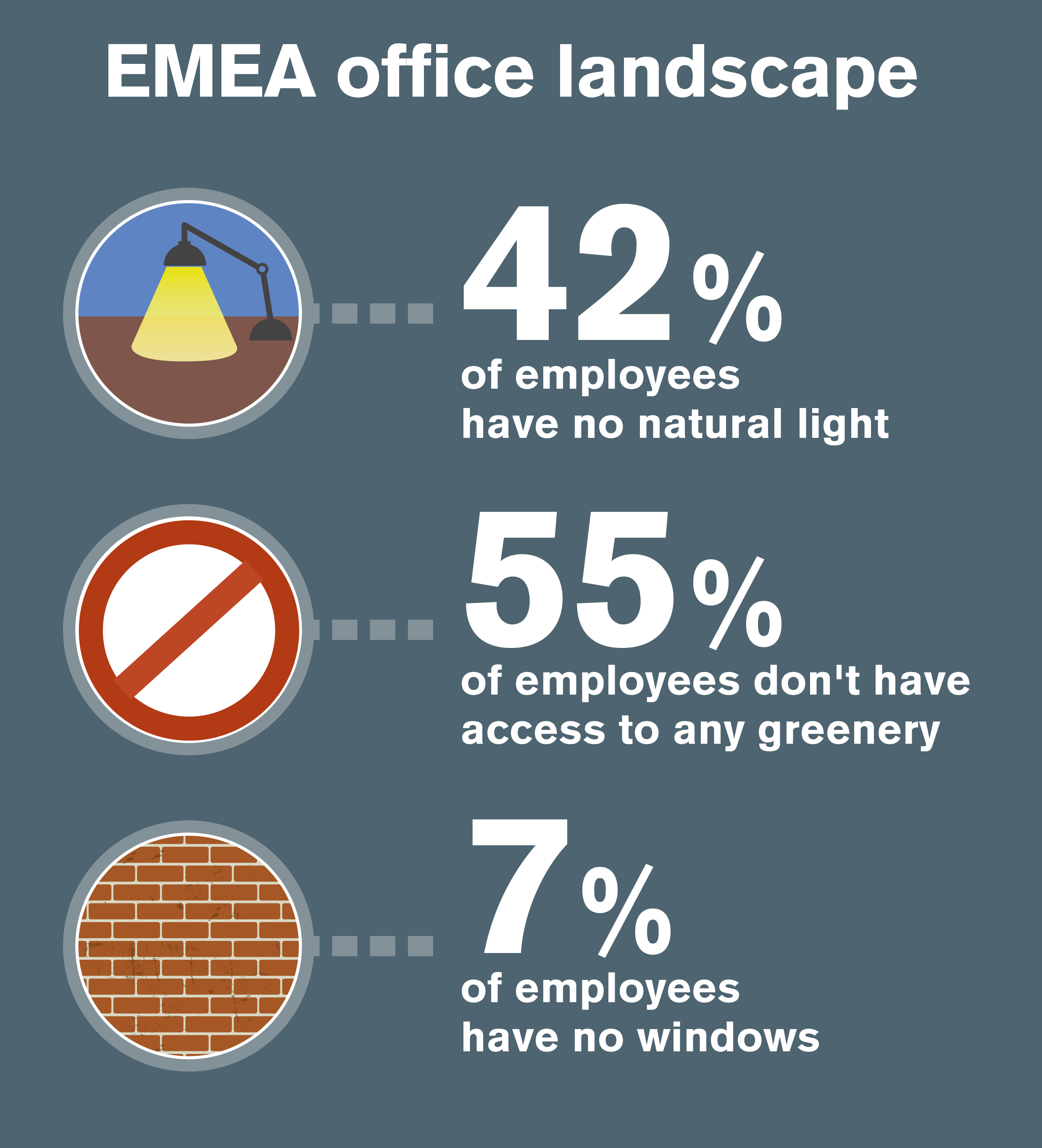RESEARCH REVEALS POOR OFFICE DESIGN IS AFFECTING UK WORKERS’ PRODUCTIVITY
EMEA office workers who work in environments with natural elements, such as greenery and sunlight, report a 13 per cent higher level of well-being
New research on EMEA office spaces has found that the UK’s nature-starved offices are significantly impacting the health and well-being of workers, increasing levels of stress and limiting productivity.
Commissioned by global modular flooring experts, Interface, and led by Organisational Psychologist Professor Sir Cary Cooper, the Human Spaces Report sampled 3600 office workers across EMEA and studied the impact of the physical office environment on employee well-being.
EMEA offices with natural elements, such as greenery and sunlight, were found not only to increase wellbeing by 13 per cent, but also increase productivity by 8 per cent.
TIME AT WORK VS ABSENTEEISM
With over four-fifths (81%) of the UK’s office workforce now based in an urban environment, the research shows that interaction with nature is becoming increasingly limited.
Yet, despite city-dominated, office-based lives, the research found people possess an inherent affinity to elements that reflect nature. For organisations that want to create a high performing workforce, investing in bringing nature-inspired design into their office space is essential.
UK office employees spend an average of 32 hours a week working in an office environment, compared with an EMEA average of 34 hours. However, the UK has some of EMEA’s unhealthiest workers, with each office employee taking 2.1 days off on average due to illness in the last three months, which is almost double the EMEA average of 1.2 days.
UK OFFICE WORKERS’ WAYS OF WORKING
A third (33%) of sociable workers in the UK would feel most productive at their own desk in an open plan office, compared with just 26 per cent opting for a solitary space.
Interestingly, nearly half of the workers (40 per cent) across EMEA said they would be most productive at their own desk in a solitary office, while 31 per cent would feel most productive at their own desk in an open plan office.
INCORPORATING NATURAL DESIGN ELEMENTS
70 per cent of office workers in EMEA feel their workplace generally provides a sense of light and space, but fewer workers in the UK agreed, with just two-thirds (62%) claiming their office offers these important design features.
Commenting on the research findings, Professor Sir Cary Cooper said: “The work environment has always been recognised as essential to employee well-being and performance but often purely as a ‘hygiene factor’. The Human Spaces report clearly illustrates the connection between the impact of working environments and productivity. It’s no coincidence that the most modern employers now take a new view, designing environments to help people thrive, collaborate and be creative. Being connected to nature and the outside world, biophilic design, to give it its real name, is a big part of that.”
Commenting on what the research findings could mean for design in the office space, Mandy Leeming, Design and Development Manager (UK) from Interface said: “Contact with nature and design elements which mimic natural materials has been shown to impact health, performance and concentration positively, and reduce anxiety and stress. When it comes to creating office spaces that achieve this, it’s about taking the nuances of nature that we subconsciously respond to, such as colours and textures, and interpreting them. Ultimately improving the wellbeing, productivity and creativity of the workforce is key to the success of market leading organisations.”









Comments
SUPERB SPEECH